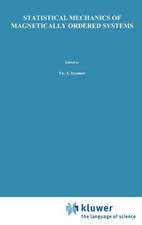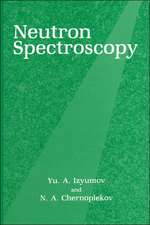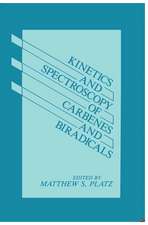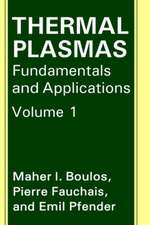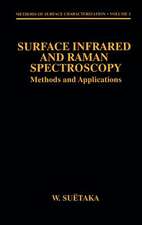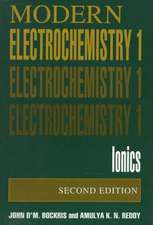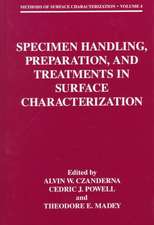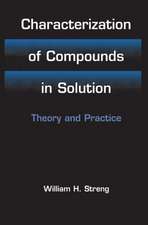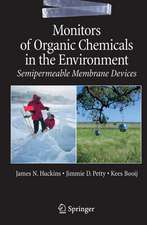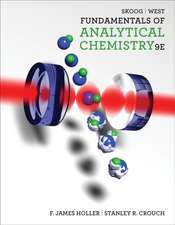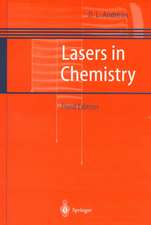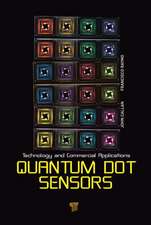An Introduction to Laser Spectroscopy
Editat de David L. Andrews, Andrey A. Demidoven Limba Engleză Paperback – 26 sep 2011
| Toate formatele și edițiile | Preț | Express |
|---|---|---|
| Paperback (2) | 388.72 lei 6-8 săpt. | |
| Springer Us – 26 sep 2011 | 388.72 lei 6-8 săpt. | |
| Springer Us – 4 noi 2012 | 953.52 lei 6-8 săpt. | |
| Hardback (1) | 962.35 lei 6-8 săpt. | |
| Springer Us – 30 aug 2002 | 962.35 lei 6-8 săpt. |
Preț: 388.72 lei
Nou
Puncte Express: 583
Preț estimativ în valută:
74.39€ • 77.38$ • 61.41£
74.39€ • 77.38$ • 61.41£
Carte tipărită la comandă
Livrare economică 14-28 aprilie
Preluare comenzi: 021 569.72.76
Specificații
ISBN-13: 9781461380047
ISBN-10: 1461380049
Pagini: 244
Ilustrații: 240 p.
Dimensiuni: 178 x 254 x 13 mm
Greutate: 0.43 kg
Ediția:1995
Editura: Springer Us
Colecția Springer
Locul publicării:New York, NY, United States
ISBN-10: 1461380049
Pagini: 244
Ilustrații: 240 p.
Dimensiuni: 178 x 254 x 13 mm
Greutate: 0.43 kg
Ediția:1995
Editura: Springer Us
Colecția Springer
Locul publicării:New York, NY, United States
Public țintă
ResearchCuprins
Sources for Laser Spectroscopy.- Methods, Diagnostics and Instrumentation.- Absorption and Fluorescence.- Infrared Laser Spectroscopy of Short-Lived Atoms and Molecules.- High Sensitivity Picosecond Laser Spectroscopy.- Raman Spectroscopy.- Industrial Applications of Raman Spectroscopy.- Laser Remote Sensing.- Nonlinear Optics.- Applications of Surface Second Order Nonlinear Optical Signals.- Laser Desorption.- Multiphoton Ionization and Laser Mass Spectrometry.
Descriere
Descriere de la o altă ediție sau format:
Remarkably sustained advances in the development of new lasers and their applications in spectroscopy have prompted this revised and expanded edition of the highly successful Introduction to Laser Spectroscopy, first published in 1995. In the new edition the editors have preserved the basic concept and structure, with the involvement of some new authors - all recognized experts in laser spectroscopy. Each chapter addresses a different technique, providing a review and analysis of the current status, and reporting some of the latest achievements. With the key formulas and methods detailed in many sections, this text represents a practicable handbook of its subject. It will be a valuable tool both for specialists to keep abreast of developments and for newcomers to the field needing an accessible introduction to specific methods of laser spectroscopy - and also as a resource for primary references.
The first two chapters lay out the technical details of the main laser systems now employed for spectroscopy, and then the principles and applications of absorption and fluorescence measurements. Following a description of Raman scattering, the development of pump-probe techniques is then traced. The next chapters deal more specifically with applications of laser-induced fluorescence, first addressing diagnostics for biochemical systems, and then applications to ordered systems. The use of tunable infrared lasers for the spectroscopy of transient species is discussed in the next chapter, followed by an introduction to optical nonlinearity focusing on its surface applications. The utilisation of nonlinear optics for tunable ultraviolet generation is then described and the penultimate chapter gives a description of femtosecond laser ionisation applied in mass spectrometry. The book concludes with a survey of the environmental applications of laser remote sensing.
Remarkably sustained advances in the development of new lasers and their applications in spectroscopy have prompted this revised and expanded edition of the highly successful Introduction to Laser Spectroscopy, first published in 1995. In the new edition the editors have preserved the basic concept and structure, with the involvement of some new authors - all recognized experts in laser spectroscopy. Each chapter addresses a different technique, providing a review and analysis of the current status, and reporting some of the latest achievements. With the key formulas and methods detailed in many sections, this text represents a practicable handbook of its subject. It will be a valuable tool both for specialists to keep abreast of developments and for newcomers to the field needing an accessible introduction to specific methods of laser spectroscopy - and also as a resource for primary references.
The first two chapters lay out the technical details of the main laser systems now employed for spectroscopy, and then the principles and applications of absorption and fluorescence measurements. Following a description of Raman scattering, the development of pump-probe techniques is then traced. The next chapters deal more specifically with applications of laser-induced fluorescence, first addressing diagnostics for biochemical systems, and then applications to ordered systems. The use of tunable infrared lasers for the spectroscopy of transient species is discussed in the next chapter, followed by an introduction to optical nonlinearity focusing on its surface applications. The utilisation of nonlinear optics for tunable ultraviolet generation is then described and the penultimate chapter gives a description of femtosecond laser ionisation applied in mass spectrometry. The book concludes with a survey of the environmental applications of laser remote sensing.
Recenzii
"The editors should...be commended for having brought together many authoritative presentations of a number of relevant topicsThe book reads wella handy reference to all those involved in the use of lasers in spectroscopy and chemical analysis."
(Nicolò Omenetto, University of Florida in Journal of the American Chemical Society, 125:5 (2003)
(Nicolò Omenetto, University of Florida in Journal of the American Chemical Society, 125:5 (2003)

